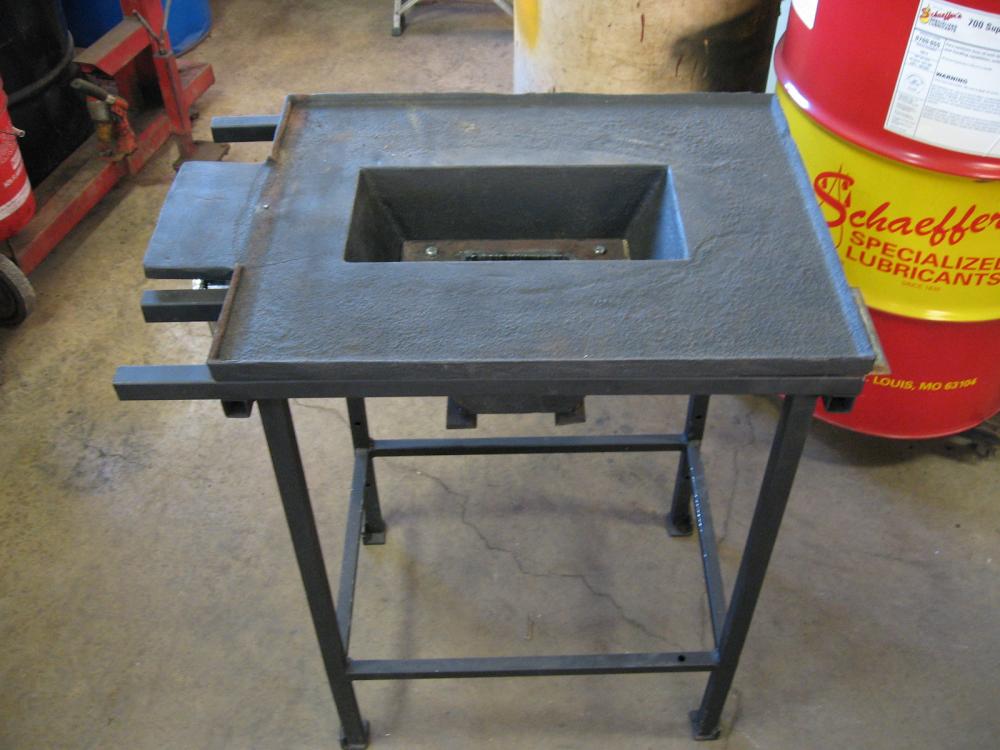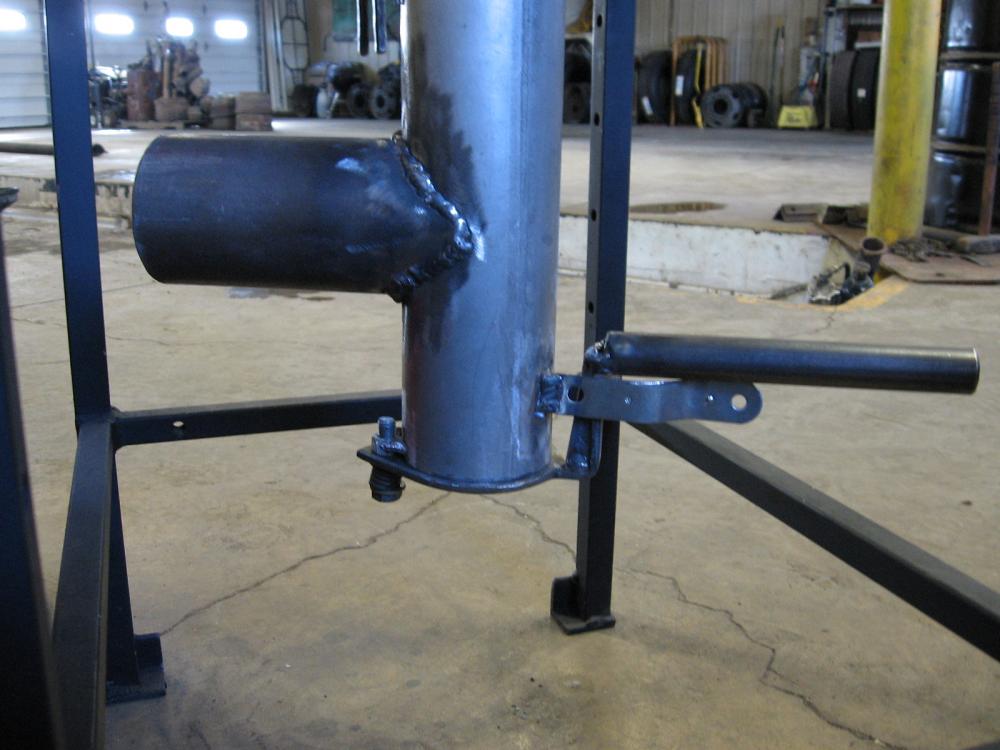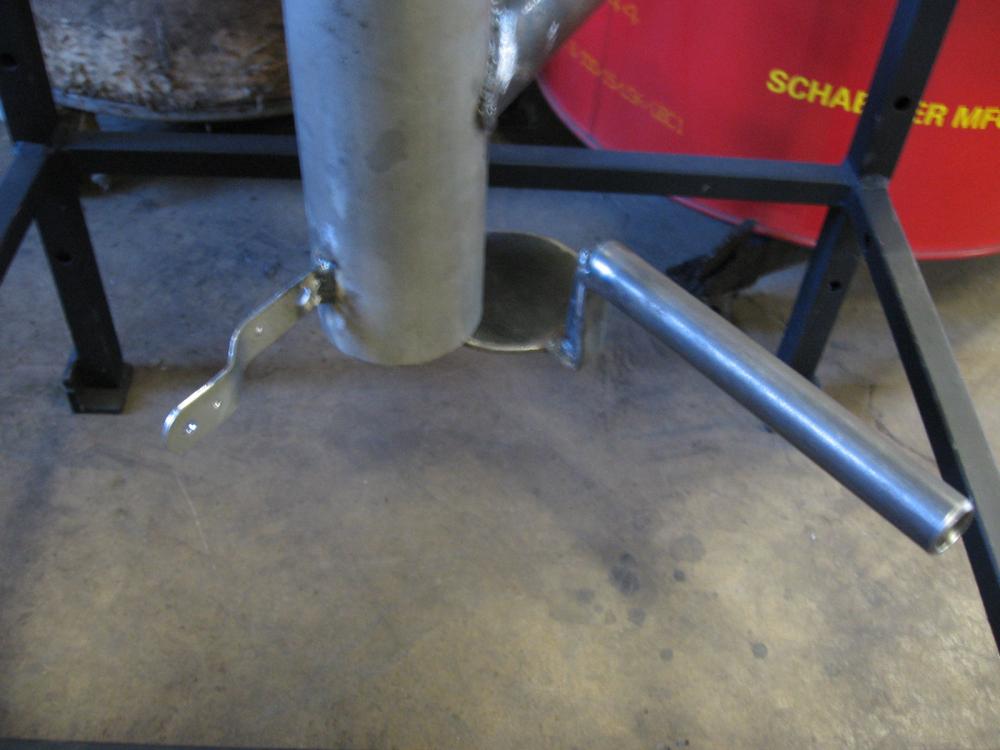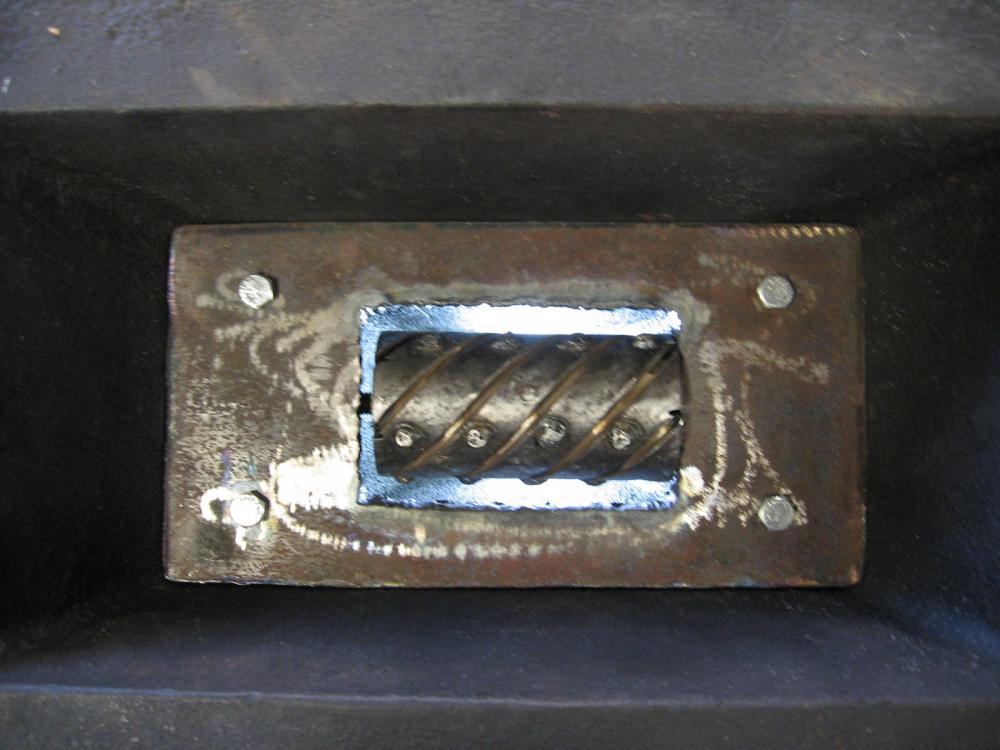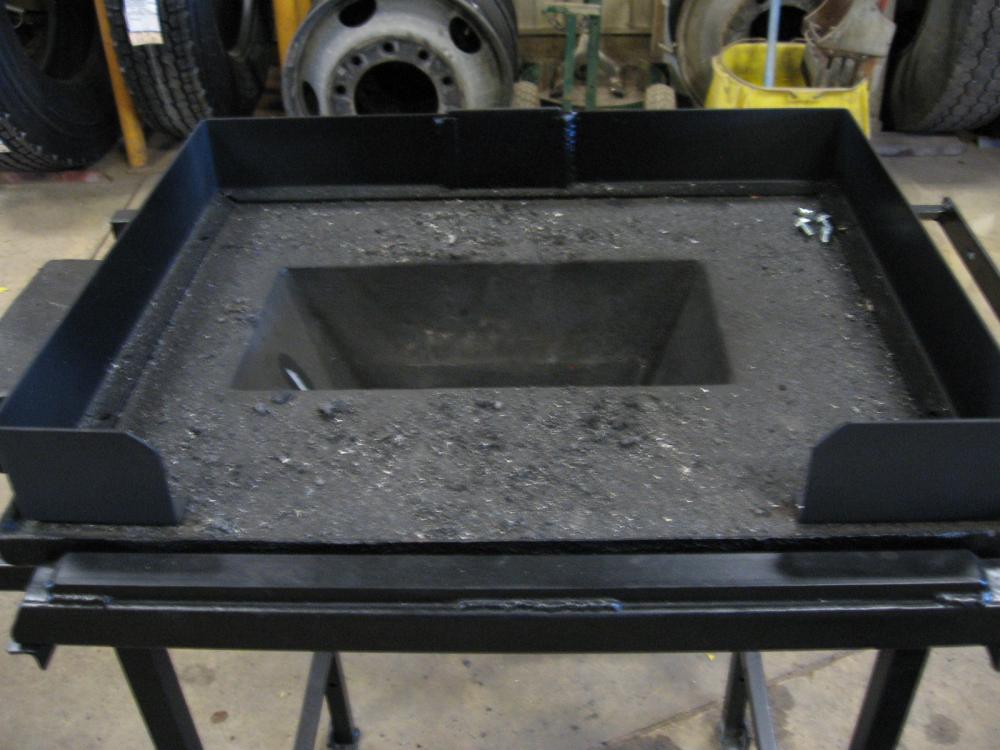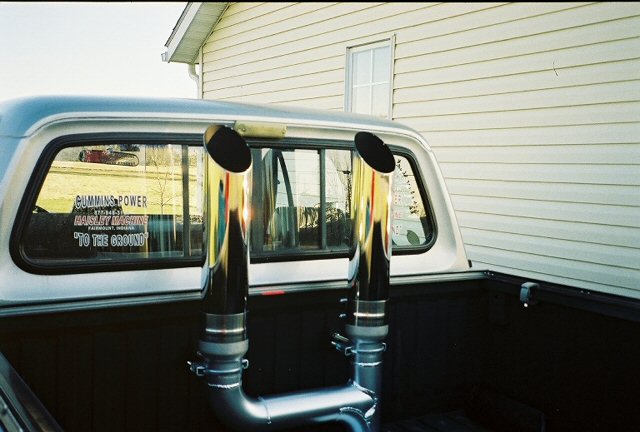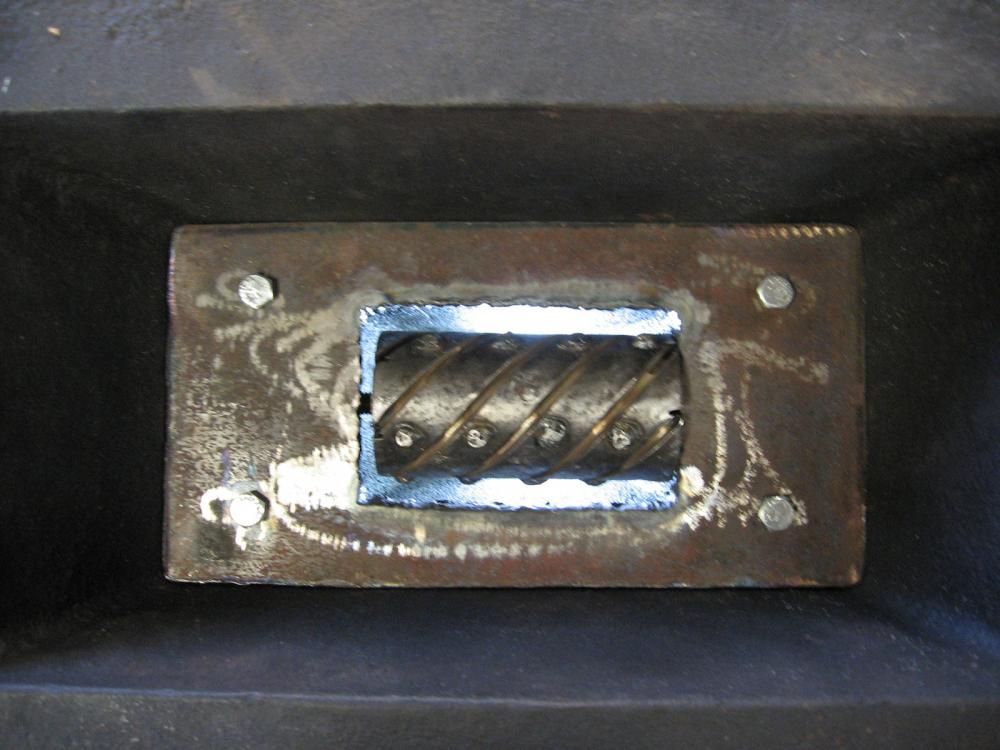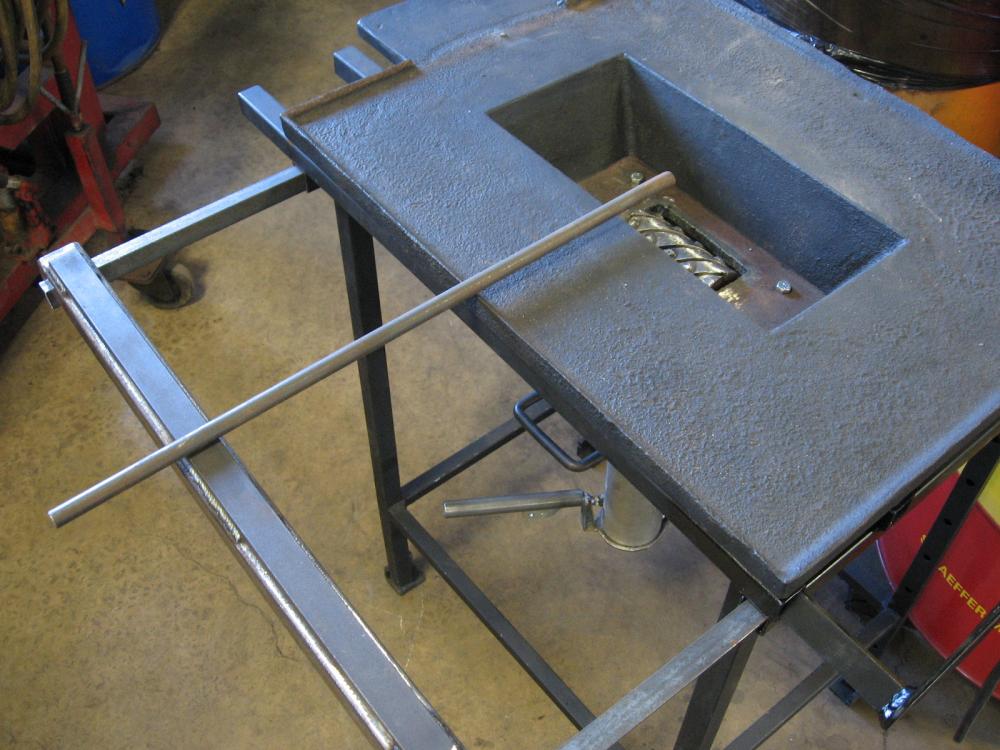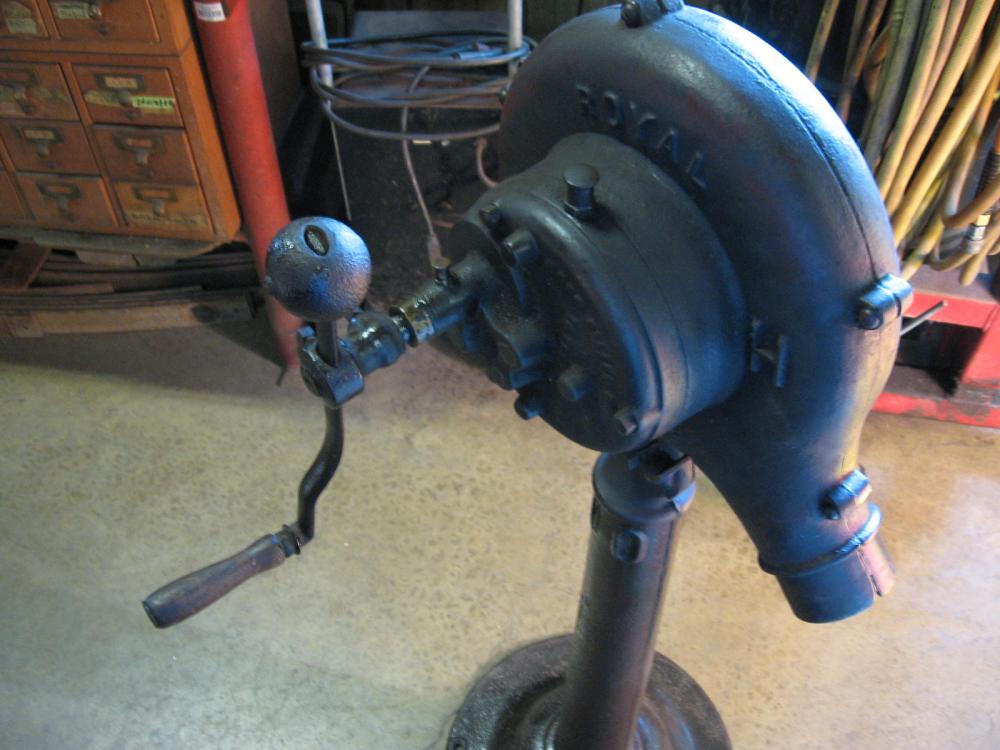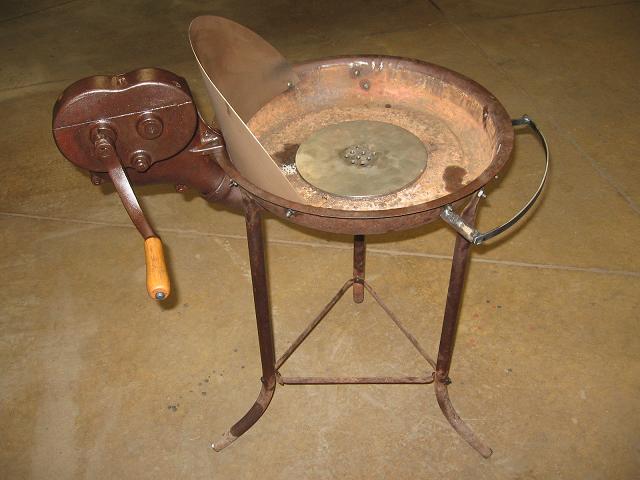-
Posts
1,227 -
Joined
-
Last visited
Content Type
Profiles
Forums
Articles
Gallery
Downloads
Events
Everything posted by SReynolds
-
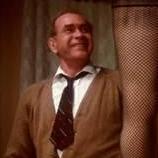
Let the HAMMER do the work (?)
SReynolds replied to SReynolds's topic in Blacksmithing, General Discussion
He did a better job in the welding class but that was a month ago and since has read up on the subject. He had a good question about fullering and I could not offer up a satisfactory answer. But when I saw him refuse to perform the "near corner" fuller method and implied the "far corner" method is easier and the same, I discovered the leaf stem won't form correctly and is clearly distorted. So he actually helped me realize the why and not simply "cuz that is how I was taugh" I had a side view of the stem (steel stock) taking shape under the blows of the hammer. -
Had a student in the class that read in a popular smithing book to "let the hammer do the work" so, thusly, he wouldn't swing it. Just pick it up and drop it. Needlessly to say ,,,,, couldn't make anything. What forging was performed say ,60/70% was myself. There were three books he had and in one of them he had read that. The real challenge was driving stock against end of horn to flare. You can't drop it sideways so......... So please help me help my students. If the book sells and folk read it ......how do you guys forge by dropping said hammer? I told him many times I do a task in one heat and had to show him how I do that. I also gave him a six pound but he didnt like that. I was hoping he could drop that awhile and get more done...........
-
It should be no problem locating scrap from pre 1850. That is my idea of satire. Basically, you isn't gonna. Scrap steel is a comodity . it aint setting around. It is processed. And as you know iron isn't made anylonger. For like 150 years..... There is a bridge I found with HUGE beams. I forget the built date but the historical marker says wrought iron. I ride my bike over it twice a year. I just noticed a few days ago that imprinted in the beams are the letters CARNEGIE
-
It's the American way.
-
I was simply agreeing with you. Air induced burns fuel/makes heat. And I like what Glenn mentioned; I agree with that unless you are a mathematician then I could see becoming obsessed with how much fuel you consume per work performed.
-
You have to keep in mind that folks who post up videos are describing a method that works for them with their skill level and their particular equipment.
-
Mine is. When I was building this one pictured (key word here; building this) I thought very tall would be better but I burn off my eye brows and the fire seems "very close and HOT" But.............I works well. I would be happy a bit lower, perhaps three/four inches, but not low like the guy used to use back in the days. They were just low.
-
I have temporarily affixed a hair dryer to my steel-table top forge (fire pot/clinker breaker etc.etc.) I simply wanted the experience and knowledge of this common methology. So I tried it. Far and away too much air. I had no way of controlling it/throttle it. if I had devised a dump gate to bleed off excess it would be fine. On the low setting it would be more air than I need and the noise was quite tolerable. Thus, yes. It would function well if I has devised a dump gate to remove the excess air with the twist of a handle. I had to open up my ash dump which isn't at arms reach and is not intended for bleeding off excess air.
-
thanks. Yea, there is a demand for me to market my forge and blower pipe. I doubt I will. It works better than it looks. twist the handle and you never poke anything down into it. I use a commercial forge at this blacksmith shop who is nameless and it has a breaker.l It serves absolutely ZERO purpose. I have to jam a rod down into it, about every 15/20 min.
-
I have a very large bellows and five mall holes (just under 3/8") in the tuyere plate and they plug off frequently from clinker. So that statement concerning small tuyere holes and high air pressure won't apply to my forge. The fact that I opened up the tuyere plate and it functions much better, is a great relief to my operation.
-
Clinker breaker. I call it the Clinkernator. It destroys clinker. Twist the handle when the air flow is a bit diminished. How do I know? I listen for the whooooshhhh sound as I rotate the crank. I can also feel the resistance to turning the crank when the passage is partially blocked..
-
I have no troubles getting my coal to roll. You need a fire pot. When the coke drops its clinker they form over the air hole or air passage(s). You use a poker to clear them or rotate the clinker breaker. many of these pictured are mine. I use both a clinker breaker and the tuyere holes. Both work real well. Also an air source to provide enough air. See an example below. I don't see a fire pot in your forge. And I can't see the tuyere holes or slots for the air.
-

Hay Mower Blade Challenge!
SReynolds replied to norrin_radd's topic in Blacksmithing, General Discussion
I love fun. ......and stretchy pants. -

Tennis Elbow taught me proper hammer technique
SReynolds replied to intrex's topic in Blacksmithing, General Discussion
true that -
I drove up to Bellevue (Ohio) to work a bit with the smith at Lyme and he had a cold fire. It was Tractor Supply hard coal. He had some soft coal I had arranged for him to buy from Yoder's Supply near Mt Eaton but wasn't using that. He was attempting to heat 1/2 stock and was taking quite a while. he threw in some soft coal, cleaned out the tuyere holes and was forging. Hard coal may work better if the tuyere holes wouldn't plug every three minutes. I don't know what it looks like as he always has a fire in it. Night and day. It's the Champion Whirlwind Blast Fire pot, but hard to say what it looks like today.I can poke a length of 1/8 x 1/2" flat stock through the clinker breaker. (which does nothing by the way) What does that mean? Say hello to my little friend. This Champion 145 and Eureka Blower will destroy steel stock. I use it as is. Just pour in the coke and coal and fire away. I use only soft coal as my hard coal experience was an embarrassment in front of a live studio audience. For real.
-

Tennis Elbow taught me proper hammer technique
SReynolds replied to intrex's topic in Blacksmithing, General Discussion
Yes, I have read that and folks at an event do tell me that I hammer wrong as I refuse to "flick my wrist" If that is what yall wanna do, forge on and build stuff. My wrist don't appreciate being "flicked" while holding a hammer no matter the weight and duration. I suppose my wrist a bit moves, but if it does, it's very little and don't notice it. Though I admit to improper hammering, I'd bet anyone I can hit their finger if placed upon the anvil. The weight of the hammer is also just as important. I don't enjoy powering down on 3/4" stock with a two pound cross peen. The length of the handle is also just as important. Try swinging a six pound awhile with a 16" long handle. It is far easier with a shorter handle. -
Time to get another blower and make two into one. I have been doing that for years. if I find one that is quite but broken in some way I buy them and keep em on hand. I Canedy I have is well worn out. It will require all new bushings and I hope to re-use the gears, but that is iffy.
-
I have thought to forge some from a quality steel, but I have more shoe pritchels than I need (rectangle). I converted two of them into square punch for nail headers.
-
Will do !
-
I reworked two horse shoe pritchels for a square hole ( nail header hole) and decided to try my hand at hardening/temper-draw. I cooled the very slow after forging to shape. I don't know what for steel Diamond brand pritchels are but quenched in used Auto trans oil filling a five gallon bucket. Heated them Just into non magnetic. I polished the taper end (about two inches worth )and heated the struck ends to orange. Pulled them from forge fire. No colors in ten minutes.Did it again. And again. And again. Nothing. I heated more of the punch (9 inches long) say four inches of it to orange heat. Nothing. Did it again. No temper oxide colors. Did it four times heating about four inches of a nine inch punch untill I see some bronze and green/ purple etc. I had to reheat the end two more times to get the bronze out to the end of the taper. That all seems quite excessive in terms of heating. I figured the end was 2, 000+ °F and seven/eight inches away for a 1/2" dia punch it was only 450/500° when I called it good. That dont sound right but color is color. If it be polished silver and is still silver after all that heat on the opposite end I guess it's right. That took a whole lotta time and heat!!! Not something I normally do.
-
The new balls rotating against rust pitted and worn cup and cone will make for a horrific noise. I have had some luck with one size oversized balls, but it don't help much. The worm gear rotates quite fast and it is a source of noise. The fix seems to locate one that is quiet. if I find one that simply "hums" I buy it even if I don't need it. I have gotten rid of all my loud (400) blowers and now enjoying the quiet life.
-
I have adjusted many over the years. if it's a good bend,, I heat it. If it's simply an adjustment (tweak) I do it in a vise cold.

